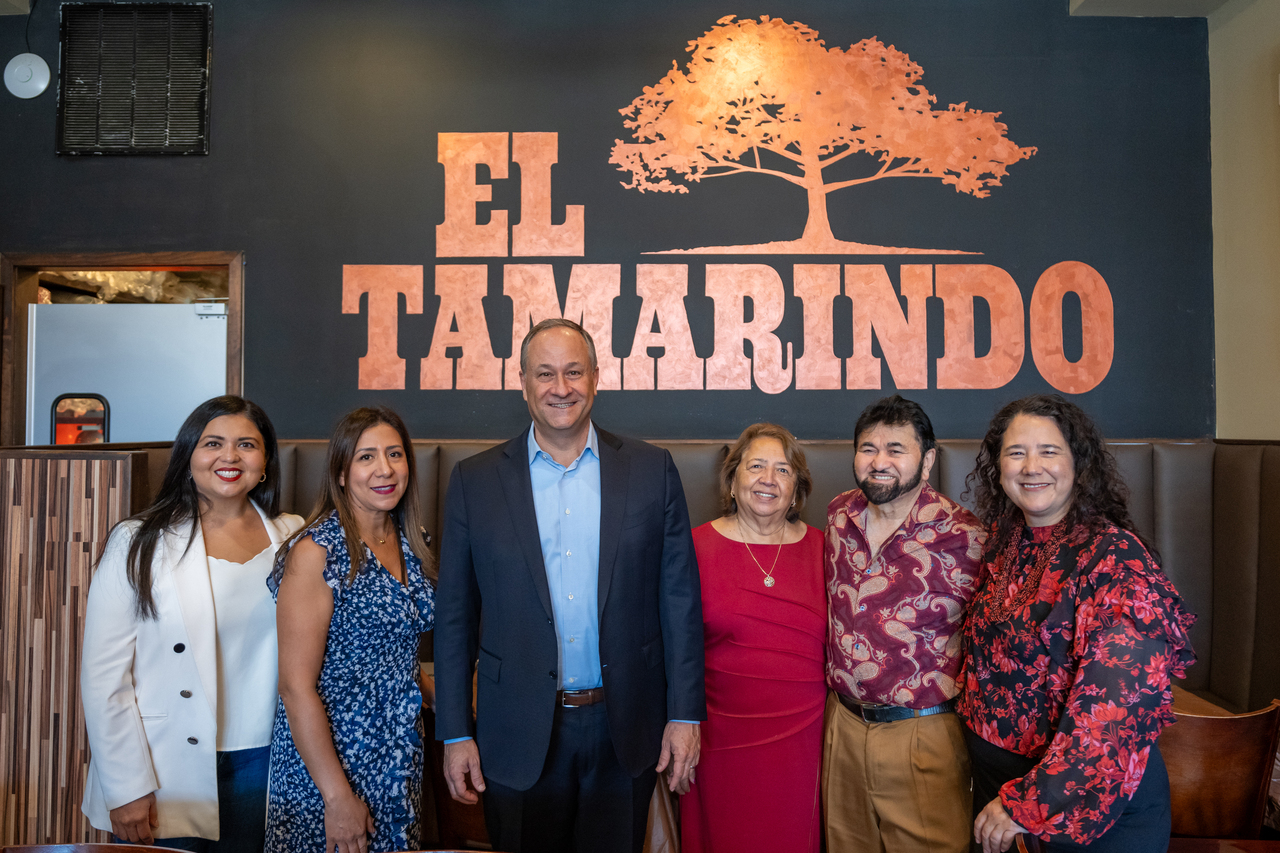
Breaking down the trust barriers surrounding the COVID-19 vaccine
AL DÍA hosted a virtual roundtable discussion in partnership with AARP on all there is to know about the COVID-19 vaccines in Philly on March 30.
With the COVID-19 vaccination effort well underway in Philadelphia and around the country, a major barrier still holding back many communities of color, especially Latinos, is the lack of information about how to get it.
In hopes of spreading awareness, AL DÍA hosted a virtual roundtable on all there is to know about the COVID-19 vaccines in partnership with AARP.
The featured speakers were Julia Rivera, the vice president of external affairs and strategic initiatives at Congreso de Latinos Unidos, Dr. Alejandro De Feria, a cardiology fellow at Penn Medicine, Grace Calvelo-Rustia, the associate state director of multicultural outreach at AARP Pennsylvania, and an AL DÍA journalist.
The moderator was Telemundo 62’s Yaima Crespo.
The discussion started by breaking down the basics of vaccine distribution in Philadelphia.
Unlike other municipalities in Pennsylvania and around the country that rely on states to get their vaccine allotments, Philadelphia gets its doses directly from the federal government.
“Giving the city more freedom to develop its own vaccine distribution plan and to account for the city’s population, which includes more people of color and low-income residents,” said Calvelo-Rustia.
While both get doses from the federal government, Philadelphia and Pennsylvania are operating their vaccine rollouts in four phases: 1A, 1B, 1C and phase 2.
Philadelphia has been operating at a slightly quicker pace.
Phase 1A has been open since vaccines first became available in December 2020, and includes frontline healthcare workers, persons 65 and older, and residents at long-term healthcare facilities.
Phase 1B, which began in Philadelphia in mid March and opened statewide on April 5, includes other essential workers, such as those in congregate settings outside of long-term care facilities, transportation workers, teachers, and U.S. postal workers.
Phase 1C, which opened partially in Philadelphia on April 5 and will open completely in the city on April 12, includes essential workers in food service, communications, IT, finance, and housing.
Phase 2 is for everyone else who had not been previously covered. The target date for its introduction in Philadelphia and the state is April 19 — the same day targeted by the Biden administration for all U.S. adults to be eligible for the shot.
Despite the phases rolling along, Calvelo-Rustia did say that there is still frustration and confusion across the state about its pace and where to actually get a vaccine.
For Philadelphia, Rivera pointed to the city’s vaccine interest form, which residents can fill out online or by calling 311. Once filled out, the city will contact the resident about where they can register to get a vaccine.
In addition to the city’s efforts, Dr. De Feria recommended interested parties also consult their primary care physician.
“Primary care doctors often have connections through their hospital, or they know clinics near you that can help you,” he said.
At the very least, they can help residents see where they fall on the eligibility chart.
As for the type of vaccines available, there are three in Philadelphia that have been approved by the FDA made by three different companies: Pfizer-BioNTech, Moderna, and Johnson & Johnson. A fourth, produced by AstraZeneca, has yet to be approved.
Both Pfizer-BioNTech and Moderna are two-shot vaccines, while the Johnson & Johnson vaccine takes just one.
Regardless of the maker or amount of shots, De Feria recommended to get the first vaccine available.
“Whatever vaccine you can get, get it as soon as possible,” he said.
He went on to say that all three are “very effective” and recognized that the news can confuse members of the general public by throwing around too many percentages on effectiveness
While immunity is what the news focuses on, what De Feria emphasized are the vaccines’ abilities to keep people from getting very sick with COVID-19 and out of the hospital or dying.
“They are all very effective at preventing that,” he said.
Regarding the side effects to the vaccines that have also circulated in the general public, De Feria offered a change of perspective. They are not “side effects,” but “symptoms” of one’s body building immunity to COVID-19.
The most common symptom is arm soreness, but smaller percentages of people have also experienced muscle aches, fevers, and chills that usually last one to two days after getting the vaccine.
“It might not feel great at the time, but you should feel some confidence that that means your body is building some type of immunity,” said De Feria.
The conversation then touched upon some of the misinformation that has spread, especially in the Latinx community around the vaccines.
RELATED CONTENT
One area of unwarranted scrutiny has been on the speed of development for the vaccines considering its technology has been touted as “new.”
For Pfizer-BioNTech and Moderna’s two-shot vaccines, they are the first ever developed using mRNA. Despite how it’s been portrayed in the media, mRNA vaccination is a medical technology that De Feria said has existed “for years.” It started back in 2005.
“We’ve been working on this for a long time, it just hasn’t been thrust into the public like it has been because of COVID,” he said. “This is not something that we are being careless about, we’ve been working on this a long time and had very rigorous studies that happened quickly to make sure it was safe.”
Rivera called attention to the influence of social media on misinformation and emphasized the importance of putting together proactive public information and outreach campaigns to get the word out.
“With messaging that resonates with many different groups, whether it’s younger folks, making sure that that information is available in multiple languages, tailored to specific experiences,” she said.
Having the information presented in certain ways allows for one-on-one conversations with trusted sources, which Rivera said are often the most effective way of getting the word out in certain communities.
Without that information and tailored outreach, many communities of color fell behind early in the vaccine rollout process in Philadelphia. In the same way COVID-19 affected Black and Brown communities the most as a result of neglect, they were also the least vaccinated.
Some zip codes with predominantly Black or Latinx populations still remain with some of the lowest vaccination rates, but panelists acknowledged how the approach has changed with the disparities becoming more well known.
Rivera spoke about how it was still an ongoing process to get some of the city’s most isolated communities inoculated.
For the Latinx community, not only has there been a language barrier to registering and finding a vaccine site, but there have also been concerns in the undocumented community about ICE operating around the mass vaccination sites.
In response, Rivera emphasized that ICE has said that it will not operate around any mass vaccination sites, and hasn’t to date.
At the end of the day, she also said it was the duty of all parties involved — from the large medical health systems that inhabit the city to its community-based organizations — to push correct vaccination information and then get communities to act.
“It’s important for folks to see how everyone has a role to play because it’s such a large-scale effort,” said Rivera.
In terms of specific efforts, she highlighted the re-purposing of Philadelphia’s Philly Counts office to train “vaccine champions” in the same way it once did “census champions” ahead of the 2020 Census.
Those “champions” take the information they learned with them back to their communities as a trusted messenger.
Another recent success towards bridging the disparity highlighted in the talk was the upcoming opening of another FEMA-run mass vaccination site at Esperanza in Hunting Park.
The neighborhood is predominantly Latino, and the site is set to vaccinate between 1,500 and 2,000 people a day. Registration at the site opened on April 6 and doses start going out on Saturday, April 10.
The whole roundtable conversation is available here.











LEAVE A COMMENT:
Join the discussion! Leave a comment.